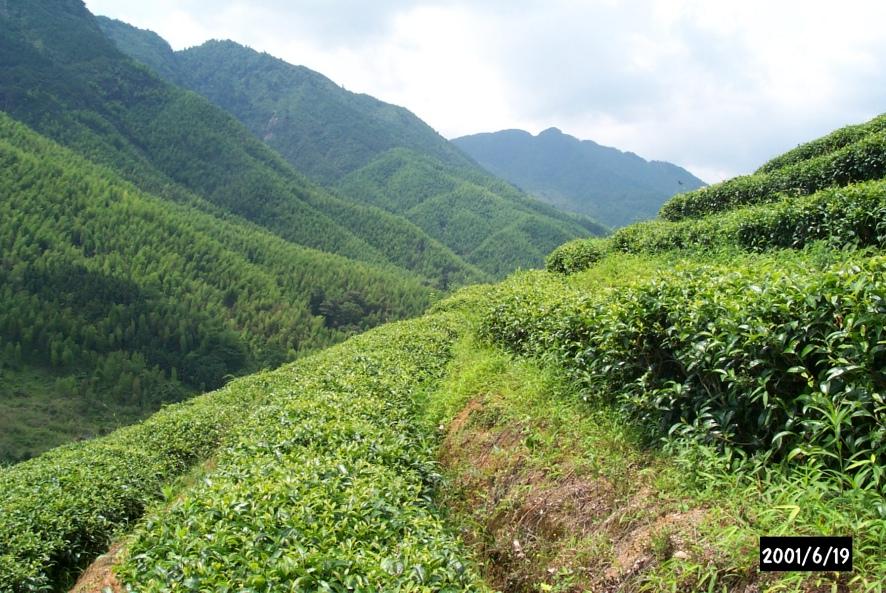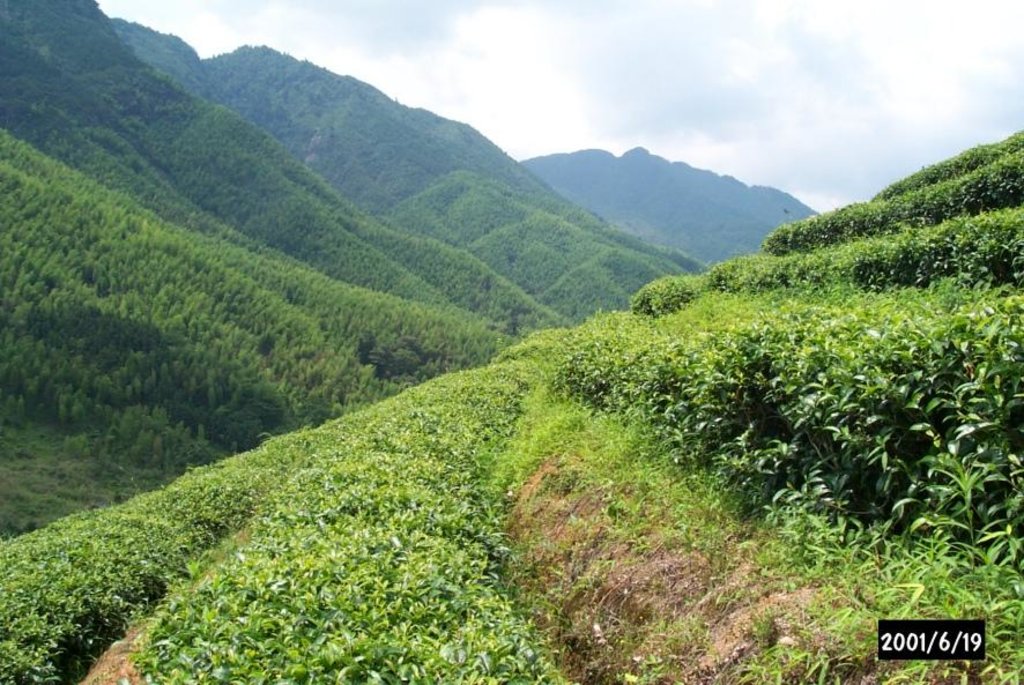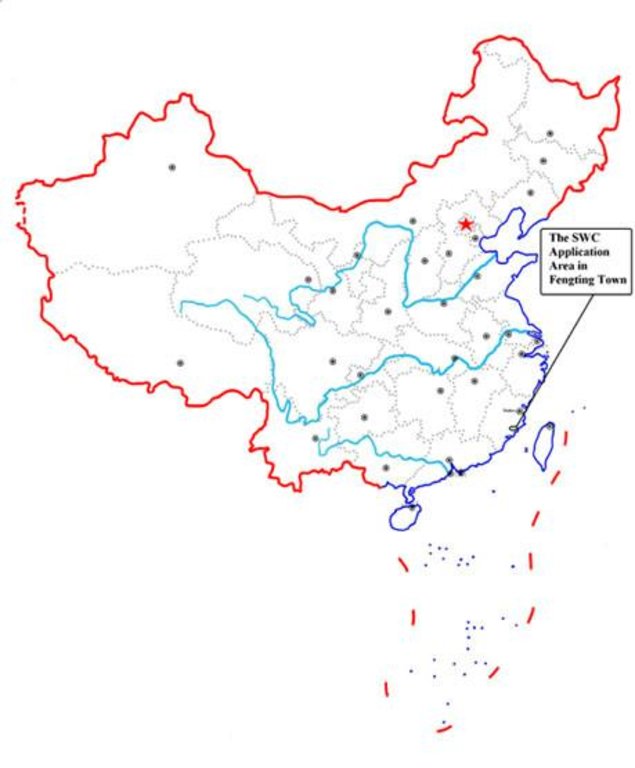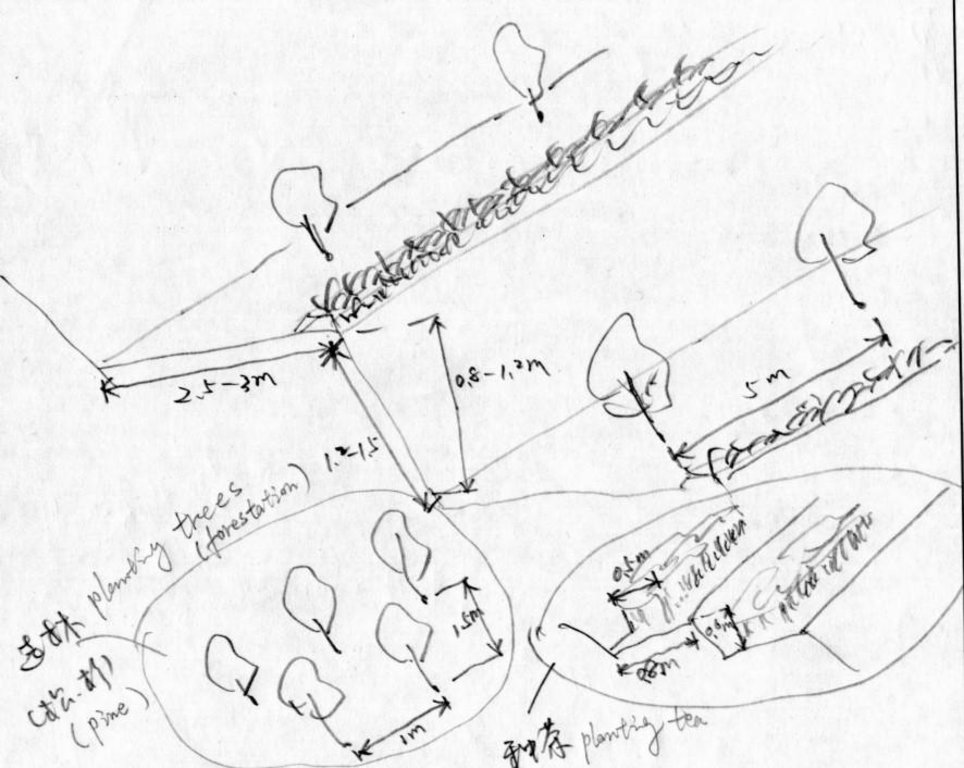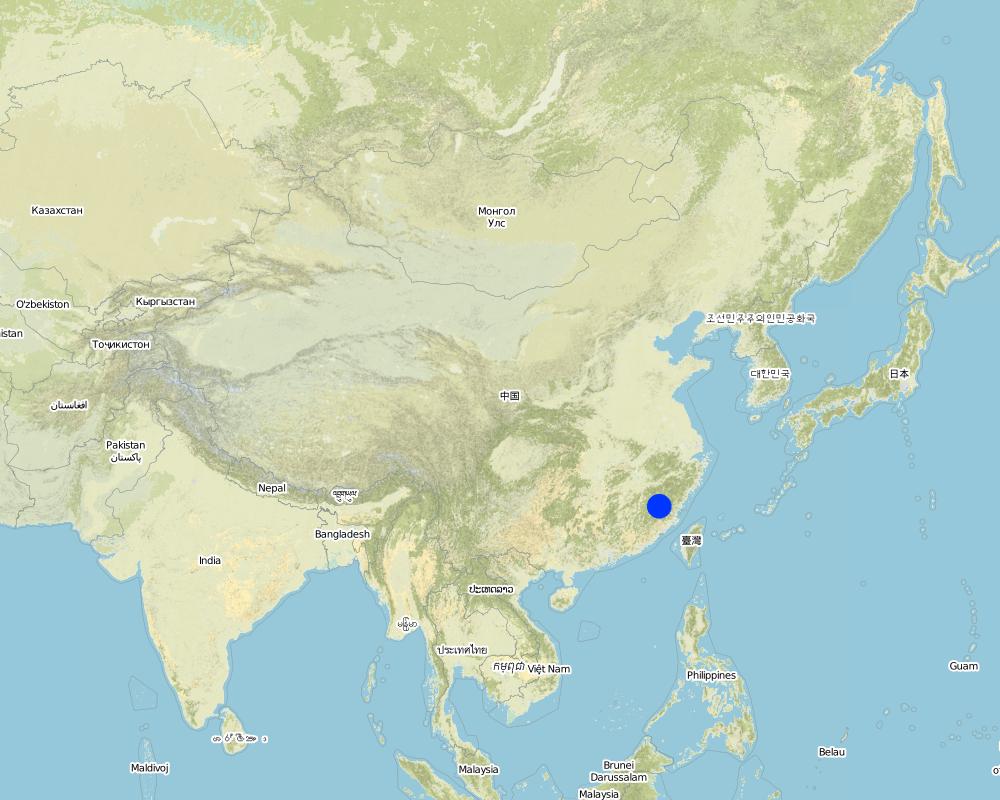Combination of Soil conservation and Development [China]
- Creation:
- Update:
- Compiler: Qishan Chen
- Editor: –
- Reviewer: Laura Ebneter
approaches_2409 - China
View sections
Expand all Collapse all1. General information
1.2 Contact details of resource persons and institutions involved in the assessment and documentation of the Approach
SLM specialist:
Zhang Rongying
86 591 8823424
stbc@public.npptt.fj.cn
Soil Conservation Office of Yanping
Yanping District Government Building, 45 Fuqian Road, Nanping 353000, Fujian
China
Name of the institution(s) which facilitated the documentation/ evaluation of the Approach (if relevant)
Soil Conservation Office of Yanping - China1.3 Conditions regarding the use of data documented through WOCAT
The compiler and key resource person(s) accept the conditions regarding the use of data documented through WOCAT:
Yes
2. Description of the SLM Approach
2.1 Short description of the Approach
Combination of soil conservation & development in Xiyang Small Watershed
2.2 Detailed description of the Approach
Detailed description of the Approach:
The goal is by soil & water conservation to improve the land utilization and output and ultimately obtain socio-economic and ecological benefits. The specific objective is to optimize the soil & water resources, improve the ecological environment, gradually change the area from the soil erosion area to the economic crop development area becoming rich area with sound environment.
Methods includes consolidating planning and comprehensive management on mountain, river, farmland, forest and access roads.
Stages of implementation: 1987-1991 primary stage of comprehensive management and development; 1992-1995 implementation stage of comprehensive management and development; 1995-2000 maintenance stage of comprehensive management and development.
Role of participants: under the general leading and coordination of county government, soil conservation department was responsible for the program planning, indicator guidance and implementation assistance. Township government and village committee were responsible for the project implementation and the local farmers were involved in the actual operation.
2.3 Photos of the Approach
2.5 Country/ region/ locations where the Approach has been applied
Country:
China
Region/ State/ Province:
Fujian Province
Map
×2.6 Dates of initiation and termination of the Approach
Indicate year of initiation:
1987
Year of termination (if Approach is no longer applied):
2000
2.7 Type of Approach
- project/ programme based
2.8 Main aims/ objectives of the Approach
The aim is to have a comprehensive control of soil erosion and establishing the soil conservation system. Developing ecological agriculture so as to push forward the socio-economical development in the small watershed.
The SLM Approach addressed the following problems: Poor quality of the existing fruit trees and seedlings, lack of funds. Natural vegetation was seriously destroyed by man-kind factors resulting in the soil erosion and worsening of the agricultural cultivation. This seriously hinders the local socio-economic development.
2.9 Conditions enabling or hindering implementation of the Technology/ Technologies applied under the Approach
social/ cultural/ religious norms and values
- hindering
low literacy of the farmers
Treatment through the SLM Approach: strengthening the training
availability/ access to financial resources and services
- hindering
lack of funds
Treatment through the SLM Approach: financing by various channels
legal framework (land tenure, land and water use rights)
- enabling
The existing land ownership, land use rights / water rights moderately helped the approach implementation: Because most of the mountain lands belongs to the village committee, it is convenient for the management and development at a large scale.
other
- hindering
quality of seedlings could not be ensured
Treatment through the SLM Approach: graft
3. Participation and roles of stakeholders involved
3.1 Stakeholders involved in the Approach and their roles
- local land users/ local communities
Working land users were mainly men (groups means village committees.)
- community-based organizations
village commmittee
- SLM specialists/ agricultural advisers
- local government
county and township government
- national government (planners, decision-makers)
3.2 Involvement of local land users/ local communities in the different phases of the Approach
| Involvement of local land users/ local communities | Specify who was involved and describe activities | |
|---|---|---|
| initiation/ motivation | interactive | Mainly:public meetings; partly: interviews/questionnaires; symposium and mobilization meeting |
| planning | interactive | Mainly: workshops/seminars; partly: interviews/questionnaires |
| implementation | self-mobilization | responsibility for major steps |
| monitoring/ evaluation | interactive | Mainly: measurements/observations; partly: interviews/questionnaires; |
| Research | interactive |
3.4 Decision-making on the selection of SLM Technology/ Technologies
Specify who decided on the selection of the Technology/ Technologies to be implemented:
- SLM specialists alone
Explain:
The choice was made through discussion between the soil conservation specialists and the village committee.
Decisions on the method of implementing the SLM Technology were made by village committee. The decisions were made after the discussion between the village committee and the land users.
4. Technical support, capacity building, and knowledge management
4.1 Capacity building/ training
Was training provided to land users/ other stakeholders?
Yes
Specify who was trained:
- land users
- SWC specialists (1), planners (2)
Form of training:
- farmer-to-farmer
- courses
Subjects covered:
Soil conservation knowledge, laws, soil conservation technologies, training for the fruit tree cultivation and pruning.
4.2 Advisory service
Do land users have access to an advisory service?
Yes
Specify whether advisory service is provided:
- on land users' fields
- at permanent centres
Describe/ comments:
Name of method used for advisory service: Demonstration, technical material dissemination; Key elements: demonstration, guidance materials; 1) Mainly: projects own extension structure and agents, Partly: government's existing extension system 2) Mainly: projects own extension structure and agents, Partly: government's existing extension system; Extension staff: mainly government employees 3) Target groups for extension: technicians/SWC specialists; Activities: training courses and farm visits
Advisory service is quite adequate to ensure the continuation of land conservation activities; continuation of various soil conservation technologies can be ensured from the very beginning of the program.
4.3 Institution strengthening (organizational development)
Have institutions been established or strengthened through the Approach?
- yes, moderately
Specify the level(s) at which institutions have been strengthened or established:
- local
Specify type of support:
- capacity building/ training
4.4 Monitoring and evaluation
Is monitoring and evaluation part of the Approach?
Yes
Comments:
economic / production aspects were ad hoc monitored through observations
area treated aspects were ad hoc monitored through observations
There were several changes in the Approach as a result of monitoring and evaluation: 1) paying attention to the selection of the good quality species of fruit trees; 2) adjusting of the agricultural structure, making it more reasonable.
4.5 Research
Was research part of the Approach?
Yes
Specify topics:
- economics / marketing
Give further details and indicate who did the research:
Economic benefit from the fruit trees and the needs of the markets. Research was carried out both on station and on-farm
5. Financing and external material support
5.1 Annual budget for the SLM component of the Approach
If precise annual budget is not known, indicate range:
- 100,000-1,000,000
Comments (e.g. main sources of funding/ major donors):
Approach costs were met by the following donors: international (Red Soil Development World Bank Project): 25.0%; government (national - subsidy, loan): 29.0%; local community / land user(s) (-): 46.0%
5.2 Financial/ material support provided to land users
Did land users receive financial/ material support for implementing the Technology/ Technologies?
Yes
5.3 Subsidies for specific inputs (including labour)
- equipment
| Specify which inputs were subsidised | To which extent | Specify subsidies |
|---|---|---|
| machinery | fully financed | |
| tools | partly financed | hand tools |
- agricultural
| Specify which inputs were subsidised | To which extent | Specify subsidies |
|---|---|---|
| seeds | fully financed | and seedlings |
- infrastructure
| Specify which inputs were subsidised | To which extent | Specify subsidies |
|---|---|---|
| community infrastructure | fully financed | |
If labour by land users was a substantial input, was it:
- voluntary
Comments:
voluntary funds input
partly paid in cash
5.4 Credit
Was credit provided under the Approach for SLM activities?
Yes
Specify conditions (interest rate, payback, etc.):
Interest rate charged: 0.6%; repayment conditions: Repay within 20 years. Interest was lower than market rate.
6. Impact analysis and concluding statements
6.1 Impacts of the Approach
Did the Approach help land users to implement and maintain SLM Technologies?
- No
- Yes, little
- Yes, moderately
- Yes, greatly
They applied much more organic fertilizer and planted legume crops in order to improved the soil fertility as well as constructed water harvest & drainage system etc.
Did the Approach improve issues of land tenure/ user rights that hindered implementation of SLM Technologies?
- No
- Yes, little
- Yes, moderately
- Yes, greatly
It can help the land users to conduct the development and management on the lands they have contracted.
Did other land users / projects adopt the Approach?
- No
- Yes, little
- Yes, moderately
- Yes, greatly
Comprehensive agricultural development projects.
6.3 Sustainability of Approach activities
Can the land users sustain what has been implemented through the Approach (without external support)?
- yes
6.4 Strengths/ advantages of the Approach
| Strengths/ advantages/ opportunities in the land user’s view |
|---|
| the same as compiler's view |
| Strengths/ advantages/ opportunities in the compiler’s or other key resource person’s view |
|---|
| It is necessary to push forward the mountain forest closure management through the adequate administrative measures. (How to sustain/ enhance this strength: Strengthening direction and reinforcing the propaganda.) |
| Local farmers and governments shall be the main units to implement the approach, national government shall provide the suitable subsidy, and regulate the favorite policies to assist the farmers in the comprehensive management on soil erosion and develop the rural economy, which is the development trend for in the future. (How to sustain/ enhance this strength: Increasing input through various channels and maintaining the continuation of the existing policies so as to mobilize the farmers' activities.) |
6.5 Weaknesses/ disadvantages of the Approach and ways of overcoming them
| Weaknesses/ disadvantages/ risks in the land user’s view | How can they be overcome? |
|---|---|
| no |
| Weaknesses/ disadvantages/ risks in the compiler’s or other key resource person’s view | How can they be overcome? |
|---|---|
| no |
7. References and links
7.1 Methods/ sources of information
- field visits, field surveys
- interviews with land users
7.2 References to available publications
Title, author, year, ISBN:
Check & Accepting Materials of Ecological Environment Construction in Xiyang Smll Watershed of Nanping City.
Available from where? Costs?
Soil Conservation Office of Yanping District of Nanping.
Links and modules
Expand all Collapse allLinks
No links
Modules
No modules


